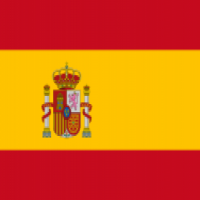Summary:
A Spanish university has developed a new protective device for intravenous therapy to avoid accidents or self-harm from patients. The device includes a transparent cover over the intravenous access and a flexible bracelet for securing and fixing such cover ergonomically to the patient's body. Companies in the medical and health-care materials and supplies field are sought to develop applications of the described invention under license agreements.
Description:
Most of hospitalized patients receive intravenous therapy. Many of them, especially the elderly, present episodes of disorientation and / or agitation in which they tend to grab and tear off venous lines as they perceive them as a foreign element and a threat.
This situation represents serious problems for the patients, since they can harm themselves or it is necessary to channel another venous line. The latter may be less harmful but implies a new puncture resulting in pain. When it is not possible to avoid the patient’s pulling, a common solution is to resort to restraints on the patients' hands. This circumstance dehumanizes health care and has a high emotional impact for patients, families and nurses. For nursing, this whole situation leads to an increase in the workload, a greater difficulty in finding intravenous lines as venous access runs out, and an important ethical dilemma between the healthcare that the patient requires and their right to autonomy.
Researchers from a Spanish university working in infusion therapy have developed an easy-to-use device. This new device protects the patient from self-harm or accidents and facilitates access and manipulation of venous lines, stopcocks, manifolds, syringes and any other equipment for administration of fluid therapy. Its design has taken into account comfort and ergonomics to avoid injuries caused by prolonged use, with special attention to manufacturing materials. These materials are reusable and easy to disinfect and sterilize, reducing medical waste and contributing to circular economy.
The university would like to reach license agreements with companies operating in those sectors where health-related elements or devices are manufactured, with the aim to develop applications of the described technology.
Type (e.g. company, R&D institution…), field of industry and Role of Partner Sought:
Type of partner sought: Industry.
Specific area of activity of the partner: Companies manufacturing medical and health-care materials and supplies.
Task to be performed: Development of applications of the described invention under a license agreement.
Stage of Development:
Under development/lab tested
Comments Regarding Stage of Development:
Technology Readyness Level TRL4: Technology validated in the laboratory (i.e. the design, development and laboratory analysis of the technological components has been carried out. There is a “low fidelity” prototype).
IPR Status:
Patent(s) applied for but not yet granted
Comments Regarding IPR Status:
Spanish utility model applied for.
External code:
TOES20211116002








